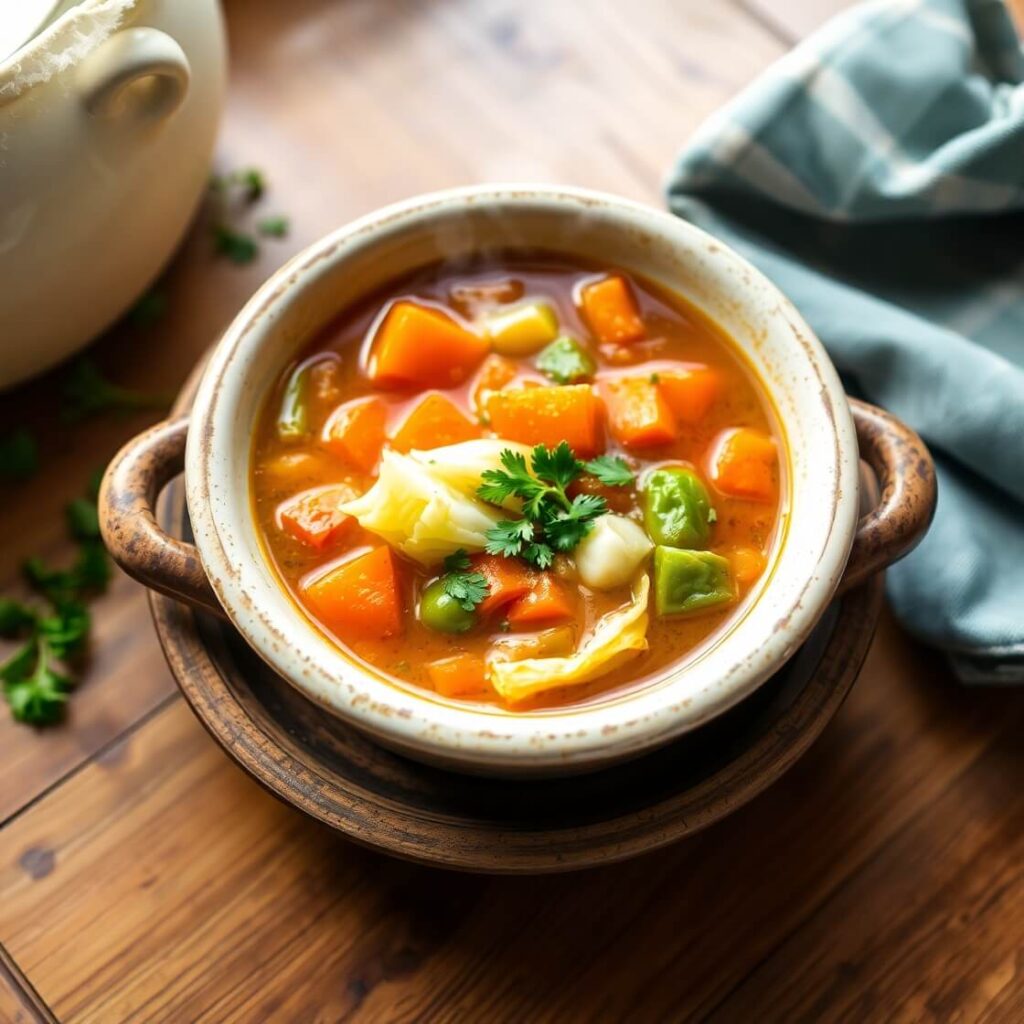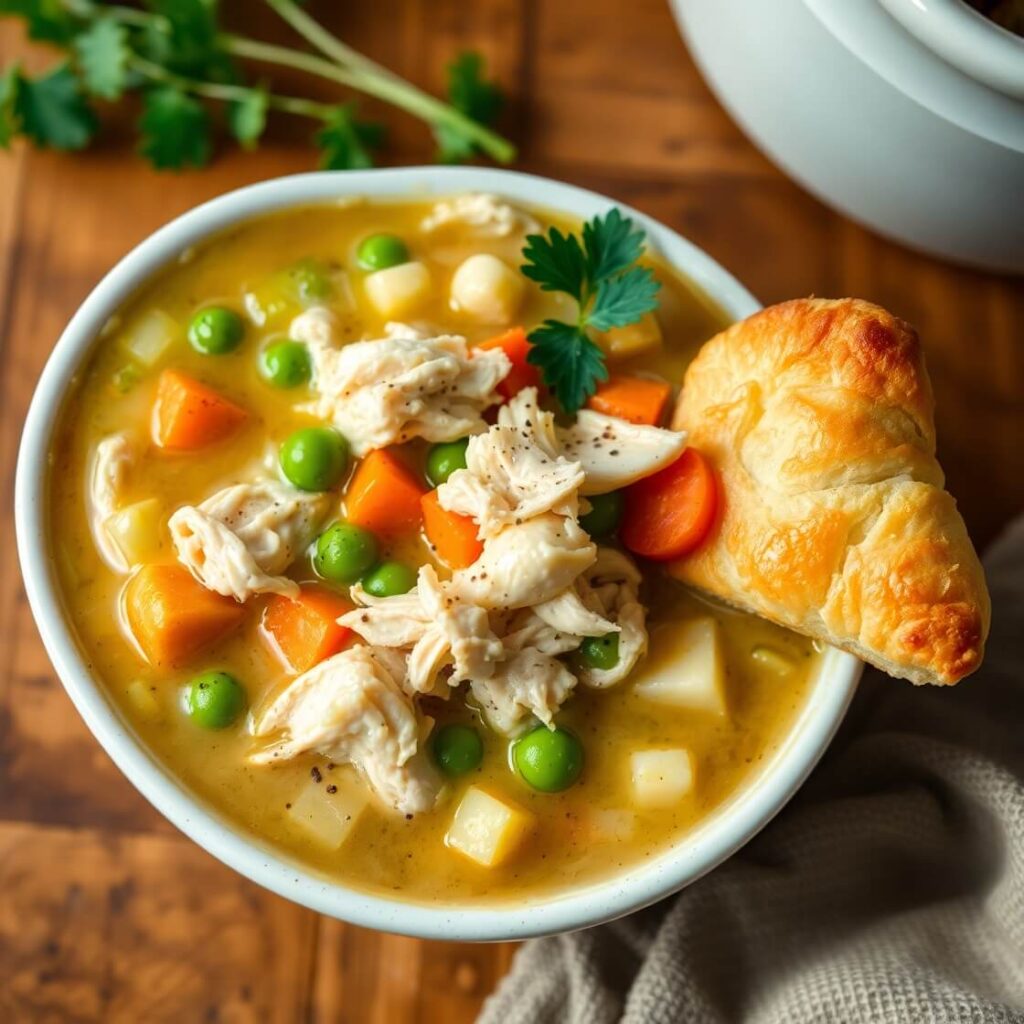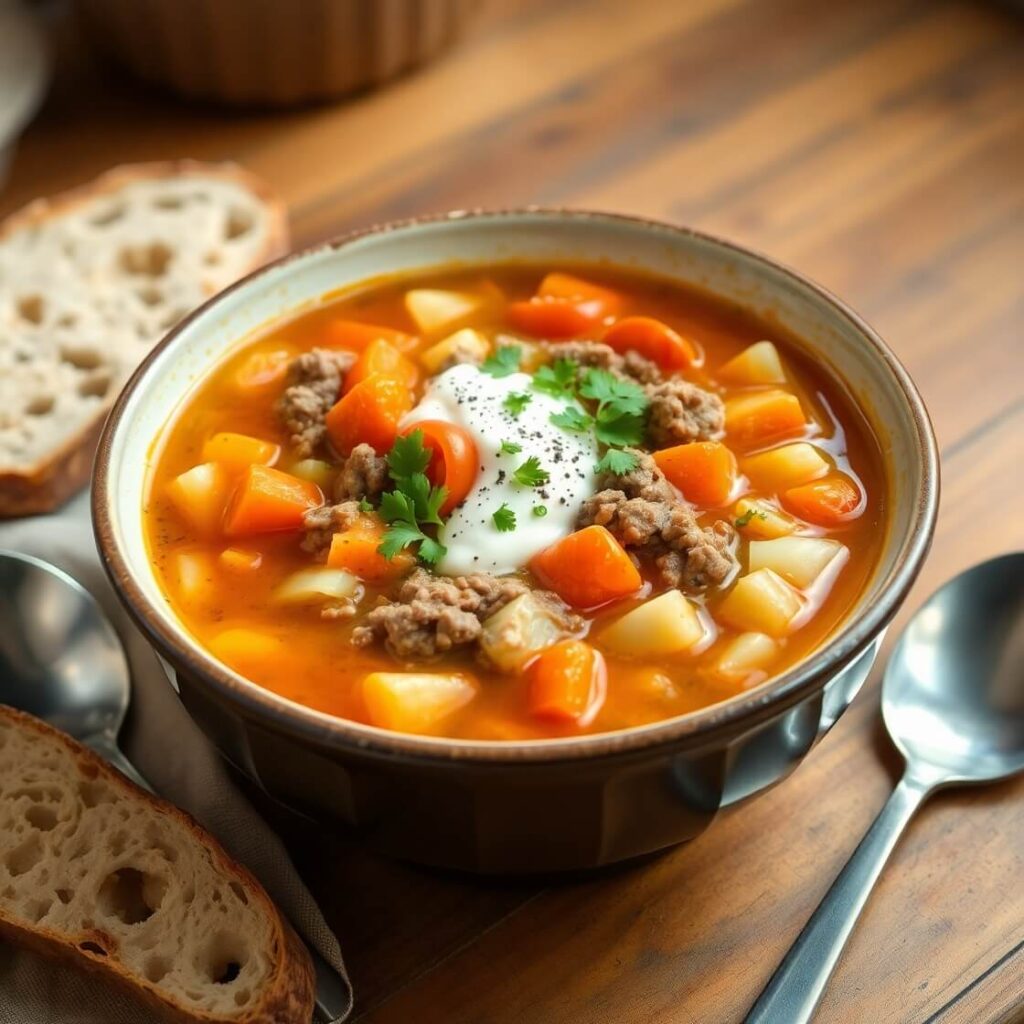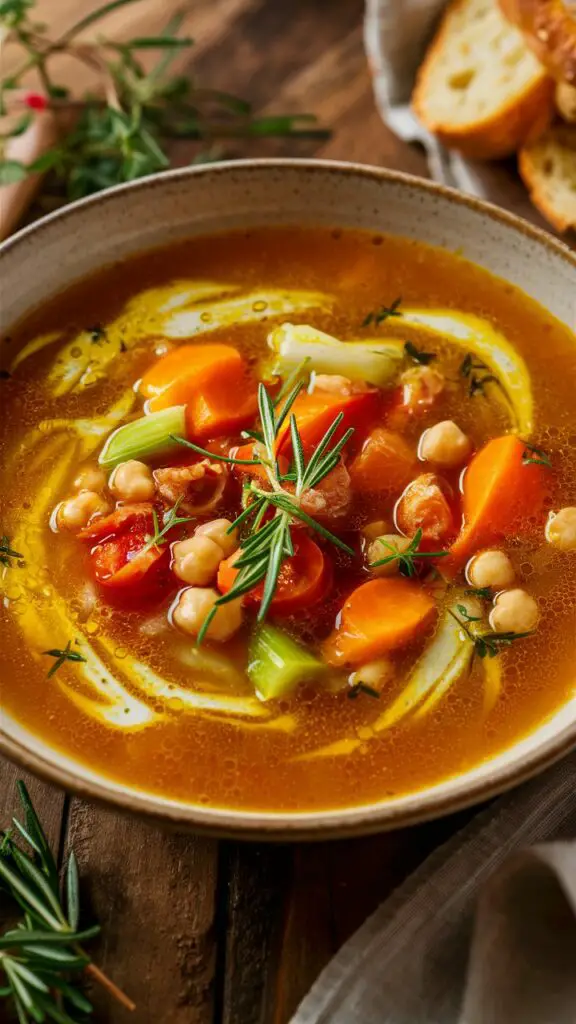Healing Cabbage Soup Recipe
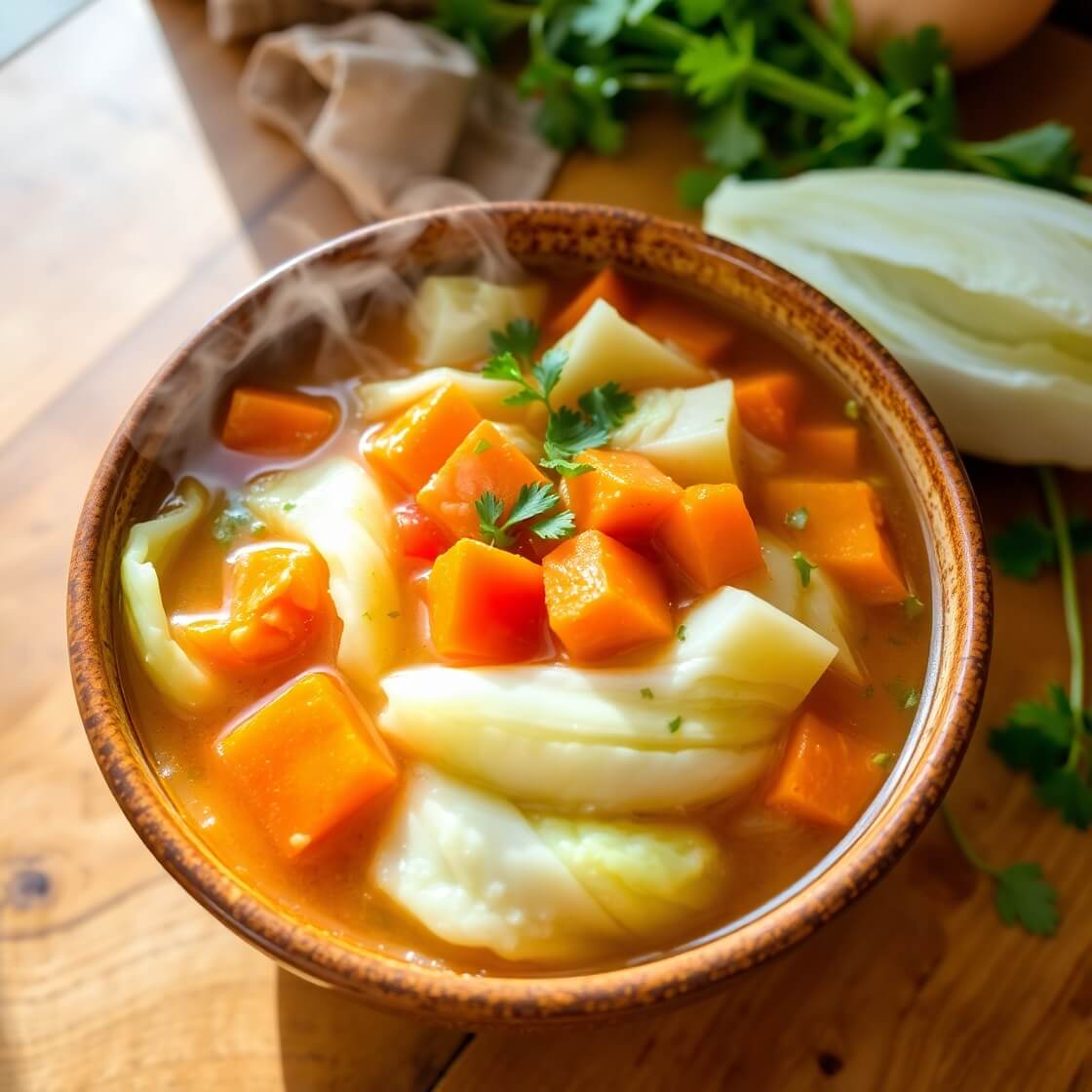
The smell of cabbage simmering on the stove always takes me back to my grandmother’s kitchen. She would slice the leaves with care while onions and garlic sizzled nearby, filling the house with warmth. One rainy afternoon, I decided to try making her cabbage soup on my own. I expected it to be a flop, since I’ve even managed to burn toast while standing right beside the toaster, but as the soup gently bubbled the aroma was pure comfort.
That first taste was rich, earthy, and lightly sweet, a small victory that quickly became a tradition. Even my cousin, who usually avoids anything green, asked for seconds.
Cabbage soup may be simple and affordable, but it’s also hearty, versatile, and full of flavor. It’s the kind of meal that works for cozy nights at home, a light and nourishing lunch, or a make-ahead dish that carries you through a busy week.
Cabbage Soup Recipe Ingredients
- Cabbage: Look for firm, crisp heads with tightly packed leaves. They should give a satisfying crunch when sliced.
- Carrots: Choose vibrant orange carrots for the best flavor and color.
- Celery: Stalks should be firm and aromatic to add freshness to the base.
- Broth: Use a good-quality chicken or vegetable broth, since the liquid is just as important as the vegetables in this soup.
Substitutions & Variations
- Use vegetable broth and skip meat for a vegan version.
- Add diced potatoes or parsnips for a heartier texture and a touch of sweetness.
- Experiment with smoked paprika or a dash of hot sauce for a gentle smoky heat.
How To Make The Best Cabbage Soup
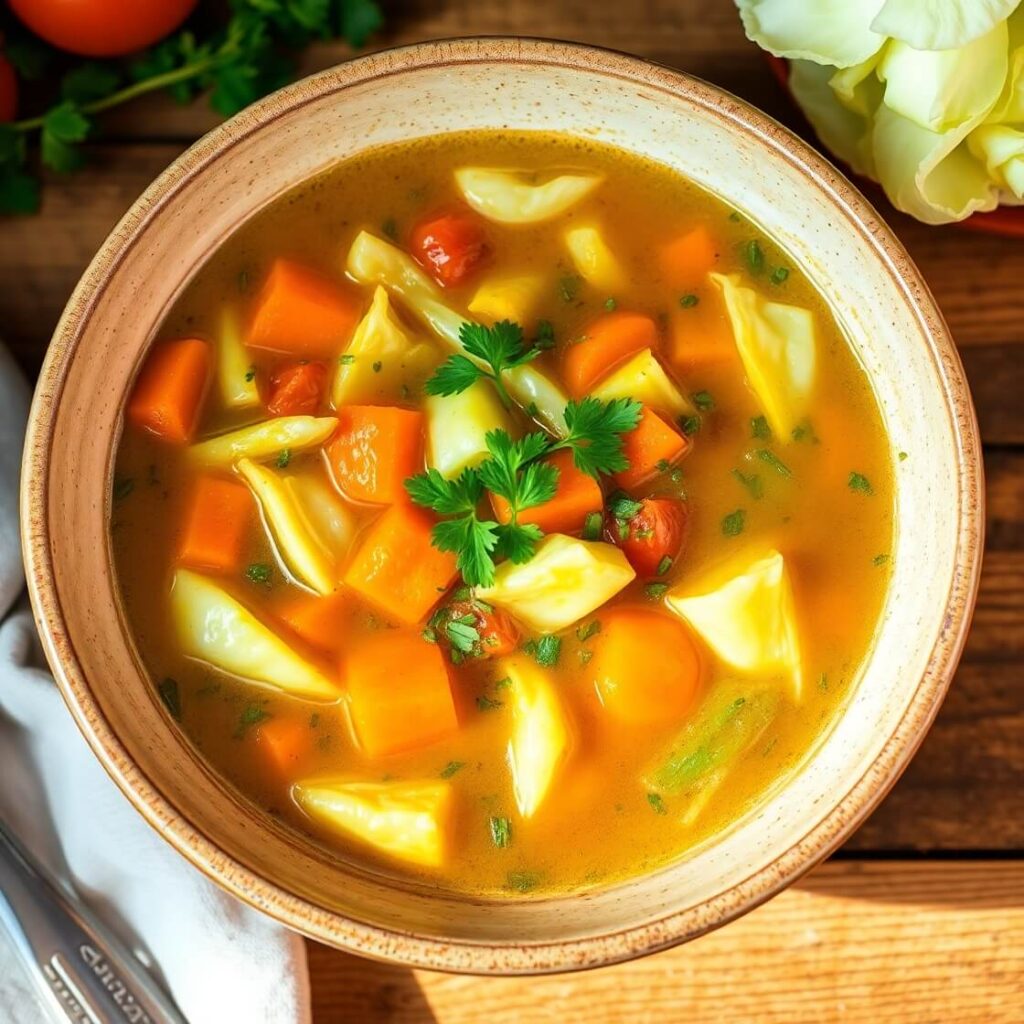
Start by heating a splash of olive oil in a large pot. Toss in your chopped onions and garlic, and let them soften gently over medium heat. The smell should be sweet and inviting, like a warm hug in your kitchen.
Next, add the chopped cabbage, carrots, and celery, stirring to coat everything in the fragrant oil. Let them cook for a few minutes until the cabbage begins to wilt, then stir in a tablespoon of tomato paste. Pour in the broth, add your herbs, and bring everything to a simmer. Cover the pot and let it cook gently for 30–40 minutes, until the vegetables are tender and the flavors meld together.
Taste and adjust the seasoning with salt and pepper. For a finishing touch, a little splash of apple cider vinegar or a squeeze of fresh lemon juice brightens the flavors, balancing the richness of the broth and cabbage.
Cabbage Soup Serving Suggestions
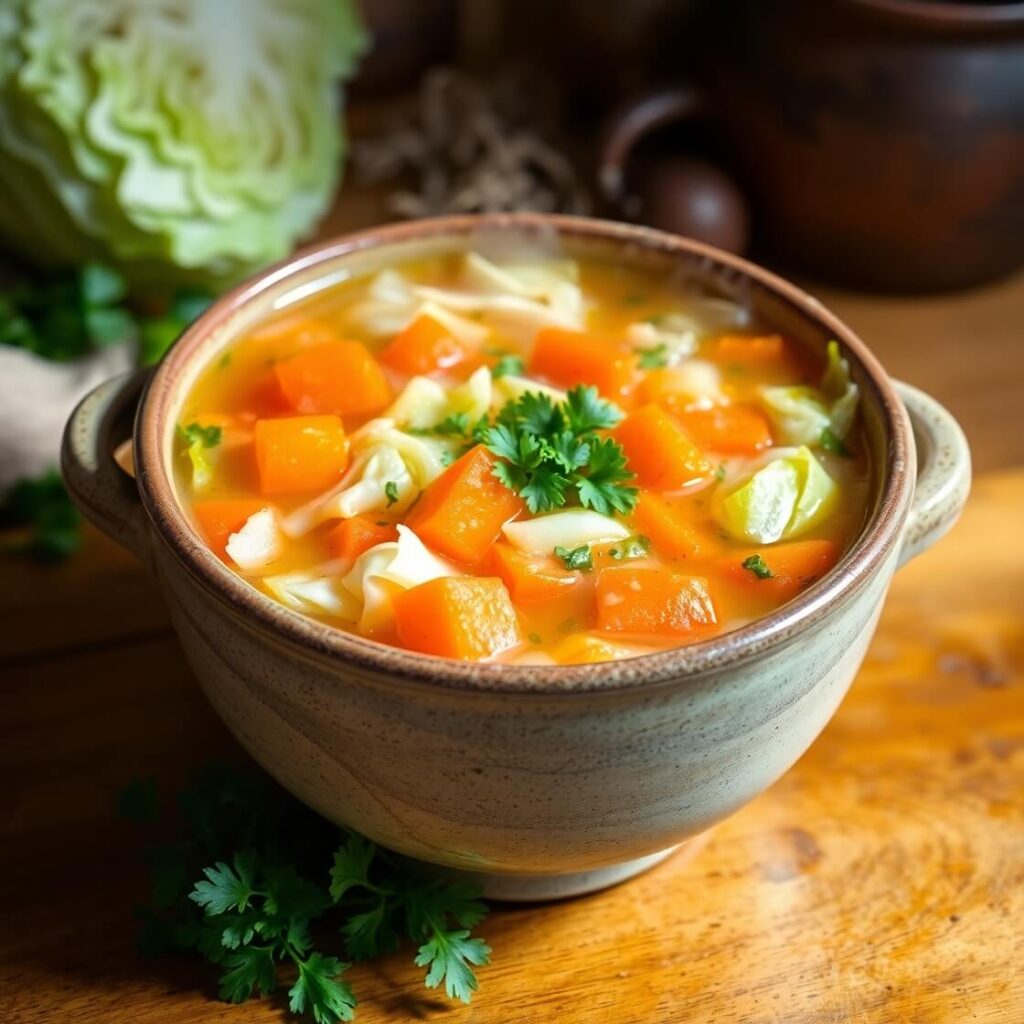
While cabbage soup is delicious on its own, a few simple touches can make it feel like a meal you’d be proud to serve for family or friends. I often ladle it into deep bowls and sprinkle freshly chopped parsley on top—it adds a bright, fresh note that complements the gentle sweetness of the cabbage.
A dollop of sour cream or Greek yogurt can create a creamy richness that contrasts beautifully with the broth. For a heartier lunch, I serve the soup alongside a slice of crusty bread or a warm baguette for dipping. On chilly evenings, I’ve even added a sprinkling of grated cheese over the top, letting it melt into the steaming soup—it’s like a cozy, little indulgence that makes everyone smile.
If you’re aiming for a lighter touch, add a squeeze of lemon juice just before serving. It instantly lifts the flavors, balancing the earthiness of the cabbage and carrots without overpowering them. Personally, I love watching my kids’ faces light up when that first tangy, savory spoonful hits their bowls—they rarely even notice the vegetables hiding inside.
My Tips
Making cabbage soup seems simple, but a few key lessons can make a big difference.
- Don’t rush the sauté: I learned this the hard way the first time I skipped caramelizing the onions. The soup tasted flat until I added a pinch of sugar to compensate. Now, I always cook the onions and garlic slowly until soft and fragrant.
- Layer your seasoning: Add a little salt early, taste mid-way, and adjust at the end. This helps the flavors develop evenly.
- Watch the cabbage: Overcooked cabbage can become mushy and bitter. Simmer gently until tender but still holds its shape.
- Fresh herbs matter: Dried herbs work, but fresh thyme or parsley really brightens the soup. I sometimes toss a few sprigs into the pot for the final five minutes of cooking for maximum aroma.
These small adjustments make a noticeable difference, turning a humble soup into something memorable.
How to Store and Reheat
One of the things I love most about cabbage soup is how well it keeps.
- Refrigerator: Store in an airtight container for up to 4–5 days. The flavors actually deepen overnight, making it even tastier the next day.
- Freezer: Portion the soup into freezer-safe containers. It keeps well for 2–3 months. When reheating, do so gently on the stovetop, adding a splash of broth or water if needed.
- Make-ahead: This soup is perfect for meal prep. I often cook a large batch on Sunday, then enjoy it throughout the week for lunches or quick dinners.
Reheating slowly ensures the cabbage retains a pleasant texture and the broth remains flavorful. Trust me—your future self will thank you for making extra.
Frequently Asked Questions
Can I use green cabbage instead of red?
Absolutely! Both types work well. Red cabbage adds a slightly sweeter, earthier flavor, while green cabbage is milder. You can even mix them for visual appeal.
Can I add meat?
Yes! Diced chicken, turkey sausage, or lean beef can be browned first and then added to the soup. Keep in mind the cooking time may need slight adjustment to ensure everything is tender.
Is this soup good for freezing?
Definitely. Just be careful not to overcook it when reheating, as cabbage can get soft quickly.
Can I make it spicy?
Of course. A pinch of red pepper flakes or a few drops of hot sauce gives it a subtle kick without overpowering the flavors.
Can I use frozen vegetables?
Yes, but fresh vegetables give the best texture and flavor. Frozen veggies are convenient, though, and can work in a pinch.
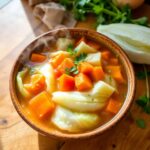
Cabbage Soup Recipe
- Total Time: 50 minutes
- Yield: 6 1x
- Diet: Vegan
Description
A comforting, nutritious cabbage soup that’s simple to make and perfect for any season. This recipe brings together fresh cabbage, sautéed vegetables, and herbs simmered in a flavorful broth, resulting in a light yet satisfying meal. Whether you’re seeking a healthy lunch or a cozy dinner, this cabbage soup offers versatility and warmth in every spoonful.
Ingredients
- 1 medium green cabbage, chopped
- 1 large onion, diced
- 2 carrots, chopped
- 2 celery stalks, chopped
- 3 cloves garlic, minced
- 1 can (14 oz) diced tomatoes (or 2 fresh tomatoes, chopped)
- 6 cups vegetable broth
- 2 tablespoons olive oil
- 1 teaspoon dried thyme (or 2 fresh sprigs)
- 1–2 bay leaves
- Salt and pepper to taste
- Optional: smoked paprika or chili flakes
Instructions
- Heat olive oil in a large pot over medium heat.
- Sauté onions, carrots, and celery until soft and fragrant (about 5-7 minutes).
- Add minced garlic and cook for 1 minute.
- Pour in vegetable broth, then add chopped cabbage and diced tomatoes.
- Stir in thyme, bay leaves, salt, and pepper.
- Bring soup to a boil, then reduce heat and simmer uncovered for 25-30 minutes until cabbage is tender.
- Remove bay leaves, adjust seasoning if needed, and serve hot.
Notes
- For a thicker soup, mash some cabbage against the pot during simmering.
- Add a splash of lemon juice before serving for brightness.
- Substitute chicken broth and add cooked meat for a heartier version.
- Prep Time: 15 minutes
- Cook Time: 35 minutes
- Category: Soup
- Method: Stove-top simmer
- Cuisine: American / European comfort food
Nutrition
- Serving Size: 6
- Calories: 110
- Sugar: 6g
- Sodium: 550mg
- Fat: 3.5g
- Saturated Fat: 0.5g
- Unsaturated Fat: 3g
- Trans Fat: 0g
- Carbohydrates: 18g
- Fiber: 5g
- Protein: 3g
- Cholesterol: 0mg

